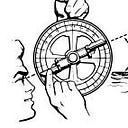From Paper to Pixel: Mastering the Cornell Note-Taking Method in the Digital Age
Published in
Jun 24, 2023
Cornell Notes — Learn to use a time tested note taking strategy.
This article has been relocated to:
https://tfthacker.com/article-obsidian-cornell-paper-to-pixel

